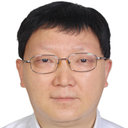[Characteristic of urinary protein spectrum in patients with stage III diabetic nephropathy and its regression analysis with traditional Chinese medicine symptom].
Schlüsselwörter
Abstrakt
To analyze the characteristic of urinary protein spectrum in patients with stage III diabetic nephropathy (DN) and its compliance with traditional Chinese medicine (TCM)symptom, for the sake of providing a basis for clarifying the rules of TCM syndrome differentiation in DN. Adopting the traditional epidemiological retrospective method, thirty-eight TCM syndromes and urinary protein with medium or low molecular weight, as well as urinary enzyme, including 24 h urinary protein (Upro), urinary albumin( UAlb), urinary retinal binding protein( URBP), urinary cystatin C (UCysC), urinary N-acetyl-beta-D-glucosaminidase (UNAG), were collected from 108 patients with stage III DN, and a multiple factor regression analysis between them was conducted. As the results, the levels of Upro, UAlb, URBP, UCysC, and UNAG were increased in 108 patients with stage III DN. Qi-Yin deficiency type was the major type. The level of UAlb in patients with Qi-Yin deficiency type was significantly higher than those without Qi-Yin deficiency type (P < 0.05). The elevation of Upro with the factors as swift digestion with rapid hungering, lassitude and lack of strength, weakness of waist and knees was complied, the elevation of UA1b with the factors as dry mouth with desire to drink, the elevation of URBP with the factors as numbness of extremities, shortness of breath, the elevation of UCysC with the factors as clear urine in large amounts, and the elevation of UNAG with the factors as frequent micturition, were complied respectively. In conclusion, for 108 stage III DN patients. The increase in urinary protein spectrum including UAlb, URBP, UCysC, and UNAG is the major characteristic. Shen and Pi are the major organs related to the appearance of urinary protein; Pi-Shen deficiency is the basic pathogenesis. The level of UAlb is taken as one of the objective syndrome factors for Qi-Yin deficiency type. The levels of UNAG and UCysC are possibly the objective syndrome factors for Shen-Qi deficiency type.



